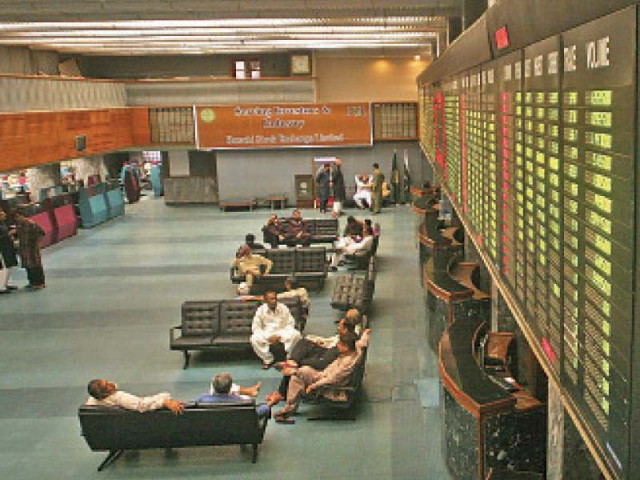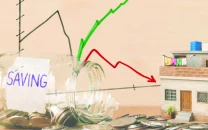Global economic outlook and Pakistan
Current year projected to see falling growth rates, upward price movement

Having made a sound recovery in 2021 from the Covid-19 induced contraction in 2020, most of the major economies on the globe are heading for an awkward combination of rising prices and falling growth rates.
This situation together with actual or likely policy responses thereto weighs significantly on Pakistan’s economic outlook.
According to the International Monetary Fund (IMF)’s World Economic Outlook, April 2022, global economic growth is likely to recede to 3.6% in 2022, as well as in 2023, from 6.1% in 2021.
Advanced economies will grow on average 3.3% in 2022 and 2.4% in 2023, down from 5.2% in 2021, while the average projected growth for emerging and developing economies (E&DEs) is 3.8% and 4.4% in 2022 and 2023 respectively, down from 6.8% in 2021.
The US, the world’s largest economy, is projected to grow 3.7% in 2022 and 2.3% in 2023, down from 5.7% in 2021. The economies in the euro area are likely to grow 2.8% in 2022 and 2.3% in 2023, down from 5.3% in 2021.
Among the E&DEs, China, the world’s second largest economy, is projected to grow 4.4% in 2022 and 5.1% in 2023, down from 8.1% in 2021.
The war and sanctions-hit Russian economy will contract 8.5% in 2022 and 2.3% in 2023, compared with 4.7% growth in 2021.
The growth of Pakistan’s economy is projected to slow down to 4% in 2022 from 5.6% in 2021 before registering a slight uptick at 4.2% in 2023.
From growth rates, we move to price movements. In 2020, the advanced economies experienced a modest 0.7% consumer price inflation and 3.1% contraction due to the lockdowns and the resultant fall in aggregate demand.
On the other hand, the E&DEs saw 2% contraction in output accompanied by a relatively moderate 5.2% inflation.
The contrast between the advanced economies on the one hand and the E&DEs on the other in terms of growth-price movement may be put down to the difference in the type of inflation they faced: predominantly supply side in the case of E&DEs and mainly demand side in the case of advanced economies.
This difference is crucial to understanding the global economic outlook.
The projected inflation for advanced economies for 2022 and 2023 is 5.7% and 2.5% respectively compared with 3.1% in 2021. For the E&DEs, the projected inflation for 2022 and 2023 is 8.7% and 6.5% respectively compared with 5.9% in 2021.
Thus, in case of both advanced economies and E&DEs, the current year is projected to be characterised by falling growth rates and upward price movement.
Such a combination is an inevitable result of supply-side inflation, or supply shocks, which is always more difficult to handle than the demand-driven inflation. The present supply shocks are largely the result of the Ukrainian crisis.
Before the Russian invasion of Ukraine, the world’s largest economy was experiencing demand-pull inflation, caused by both the multibillion-dollar fiscal stimulus and a loose monetary policy, whereby the Federal Reserve (Fed), the central bank, kept the benchmark interest rate close to zero for two years.
The expansionary policies were a response to the pandemic-induced economic slump.
However, as the economy regained momentum in 2021 and demand-driven inflation built up, the Fed hiked the benchmark interest rate: first in March this year by 0.25 percentage point and then in the first week of May by 0.50 percentage point, which represents the biggest rate hike since 2000.
The Bank of England has also raised its prime interest rate by 0.25 percentage point to a 13-year high to ward off inflationary pressures.
These incremental increases in the interest rate, which are likely to continue for the rest of the year, will prompt a massive outflow of foreign portfolio investment (FPI) from several E&DEs to the US, UK and other advanced economies.
As a result, the currencies of many E&DEs will depreciate, stoking inflation. This inflation will be in addition to the fuel and food price increase set off by the war in Ukraine and the resurgence of the pandemic in China, the globe’s largest manufacturer, which is exacerbating supply-chain disruptions.
While the interest rate hike in the US and the UK may put the brakes on the demand-side inflation, it will be of little help in coping with the supply-side inflation.
As a result, the US is projected to witness both upward price movement (7.7% from 4.7% in 2021) and a fall in growth rates (3.7% from 5.7% in 2021) in 2022.
The same goes for the euro area, where a lacklustre 2.8% growth rate will be accompanied by a relatively high 5.3% inflation, and the UK, which is also projected to have a falling growth (3.7% from 7.4% in 2021) accompanied by an increasing inflation (7.4% from 2.6% in 2021) in 2022.
Implications for Pakistan
For Pakistan, as for several other developing economies, the implications for this rising price-falling growth combination are likely to be significant.
The US, China and the UK are respectively Pakistan’s three largest export markets. Growth recession in these and other important export markets, notably those in the euro area such as Germany, may put the brakes on Pakistan’s export growth.
The first 10 months of the current financial year have seen a healthy 25.5% increase in exports.
A drop in exports, by itself, is not likely to significantly pull back Pakistan’s overall economic growth, as exports account for less than 9% of GDP.
However, if the increasing trade deficit, which reached $39 billion during FY22 (July-April), forces the introduction of import compression measures, economic growth rate may significantly fall.
Being a net food and net fuel importing country, Pakistan is likely to see a big jump in food and energy import bill.
During FY22 (July-March), food and energy imports increased to $6.30 billion and $12.66 billion respectively from $5.34 billion and $6.67 billion respectively during the corresponding period of FY21.
The interest rate hike in some of the major economies, notably the US, will put downward pressure on the exchange rate at a time when the domestic currency has already seen a steep fall in recent months due to an increasing current account deficit, political uncertainty and a stalled IMF credit programme.
The exchange rate depreciation will drive up the cost of imported raw material, components and machinery and thus add to the general price level, which at the end of March 2022 had seen YoY growth of 12.7%.
Since the interest rate is a function of inflation, in the last Monetary Policy Statement, the SBP increased the benchmark rate to 12.25%.
The increase in interest rate coupled with currency depreciation will add to the cost of debt servicing, the largest component of public spending. As a result, the fiscal deficit will go up.
The deficit will increase further in case the government continues to subsidise energy consumption.
The writer is an Islamabad-based columnist
Published in The Express Tribune, May 16th, 2022.
Like Business on Facebook, follow @TribuneBiz on Twitter to stay informed and join in the conversation.


















COMMENTS
Comments are moderated and generally will be posted if they are on-topic and not abusive.
For more information, please see our Comments FAQ